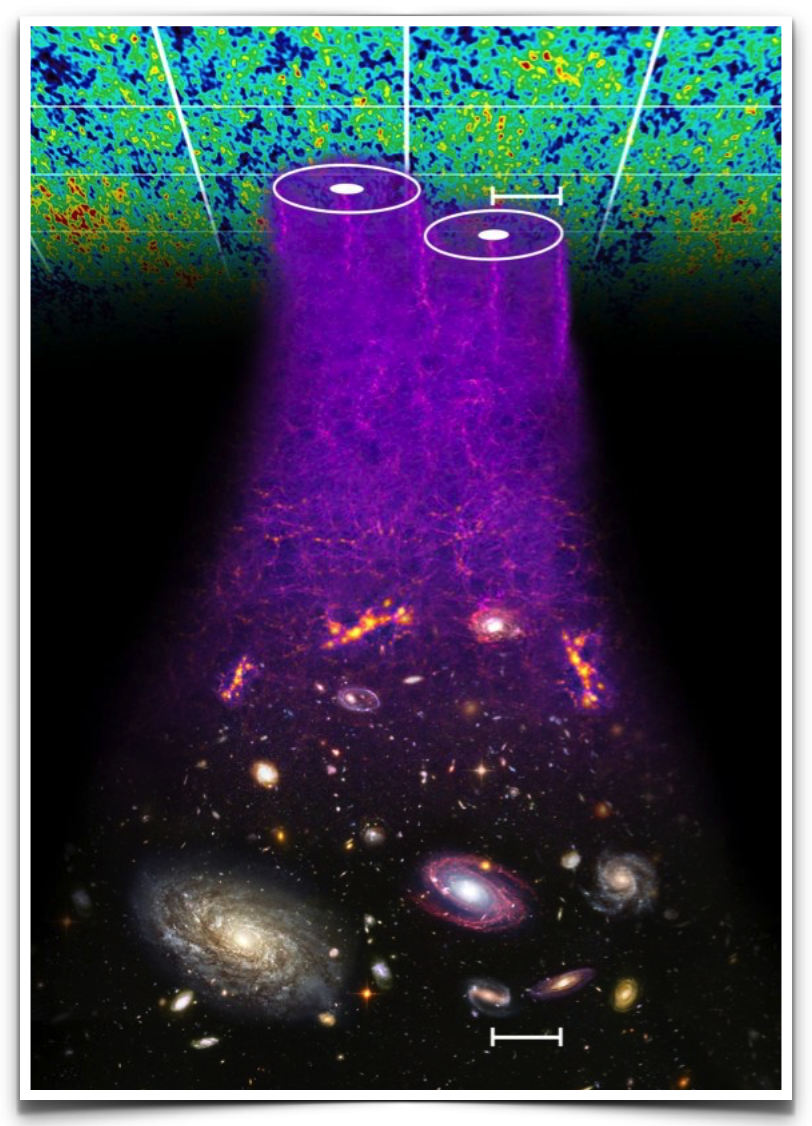Interests

Weak Gravitational Lensing
Weak gravitational lensing is the first cosmic probe I touched in my research life. It probes the total matter distribution, no matter it is luminous or not, and its dynamic status. Weak lensing has two major effects on the observed galaxy: 1) the galaxy shapes are changed coherently, and 2) the galaxy flux and size is changed. All the galaxies we observed are slightly sheared and (de)magnified. A typical level is 2% for z~1. To detect this weak signal from the statistics of galaxy shapes, we need good control of the systematics, including those from observations like the photo-z uncertainties, the intrinsic alignment, and etc., and those from the theoretical side like the model accuracy, high order effects, baryonic impacts, and etc.
Another and independent way is to extract the weak lensing signal from the galaxy distribution fluctuation, which includes the intrinsic galaxy clustering and the cosmic magnification effect. However, the former is many orders of magnitudes larger than the later. A novel method is under development to accomplish this goal.

Baryon Acoustic Oscillations
Baryon acoustic oscillation (BAO) happens in the early Universe when the photons and baryons are tightly coupled with each other in the high-temperature plasma. The density fluctuation propagates in the plasma with a sound speed close to the speed of light. As the Universe expands, the temperature decreases so that the photons are decoupled from the plasma. The density fluctuations patterns are frozen at that moment, leaving a physical scale related to the cosmological model and parameters. This pattern can be observed both in the cosmic microwave background from the early Universe, and in the galaxy distributions in the late Universe.
BAO is a powerful cosmic probe with small systematics, and is the main target of many galaxy surveys. With the technique called BAO reconstruction, the bias and uncertainties induced by the nonlinear evolution of the late Universe are further reduced. Improving the reconstruction performance with new algorithms is of my interest.

Redshift Space Distortions
Redshift space distortion (RSD) effect is an essential cosmic probe since it provides information on the cosmic structure growth rate. With the inclusion of the RSD in the analysis, one can discriminate different modified gravity models which share the same expansion rate with the ΛCDM model. Currently, the cosmological constraint from the RSD effect is not at the level of satisfying. Researchers are making great efforts to better understand the RSD nature and propose better theoretical models.

Cosmological Simulations
Simulation technique is of great importance in the study of modern cosmology. It provides us accurate theoretical predictions on statistics of various late-time cosmic probes. Mocks constructed upon the simulations are widely adopted in the test of analysis pipelines, in the quantification of the systematics, and in the validation of brilliant methods trying to avoid the systematics. My researches heavily relies on running and analyzing simulations and mocks, run by Gadget, CUBEP3M, CUBE, and approximate simulations such as FastPM. Light-cone construction is the base for my researches on weak lensing systematics and map-making. I’m also interested in the emulator construction for the cosmological analysis, and machine learning projects for mock making.